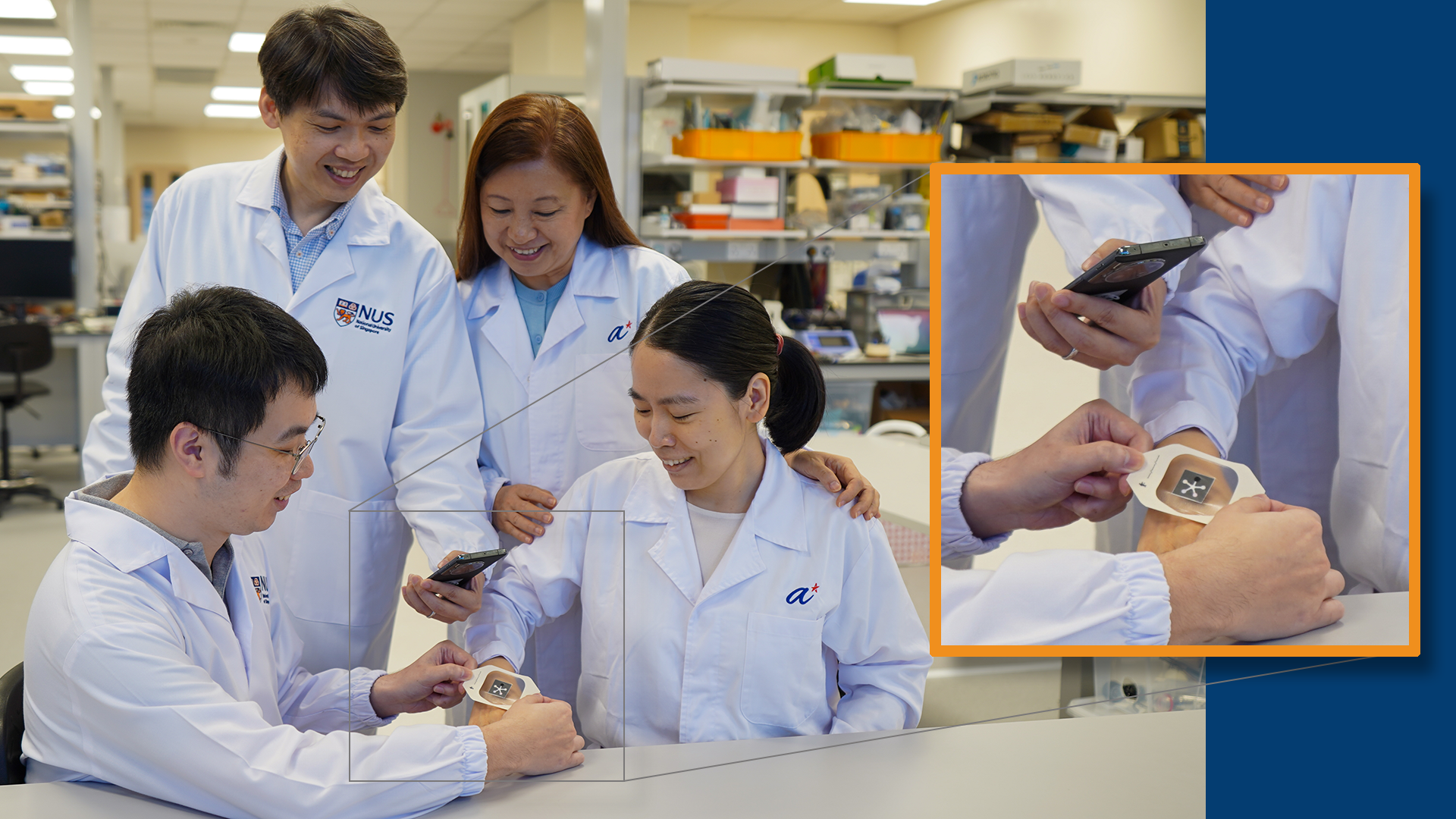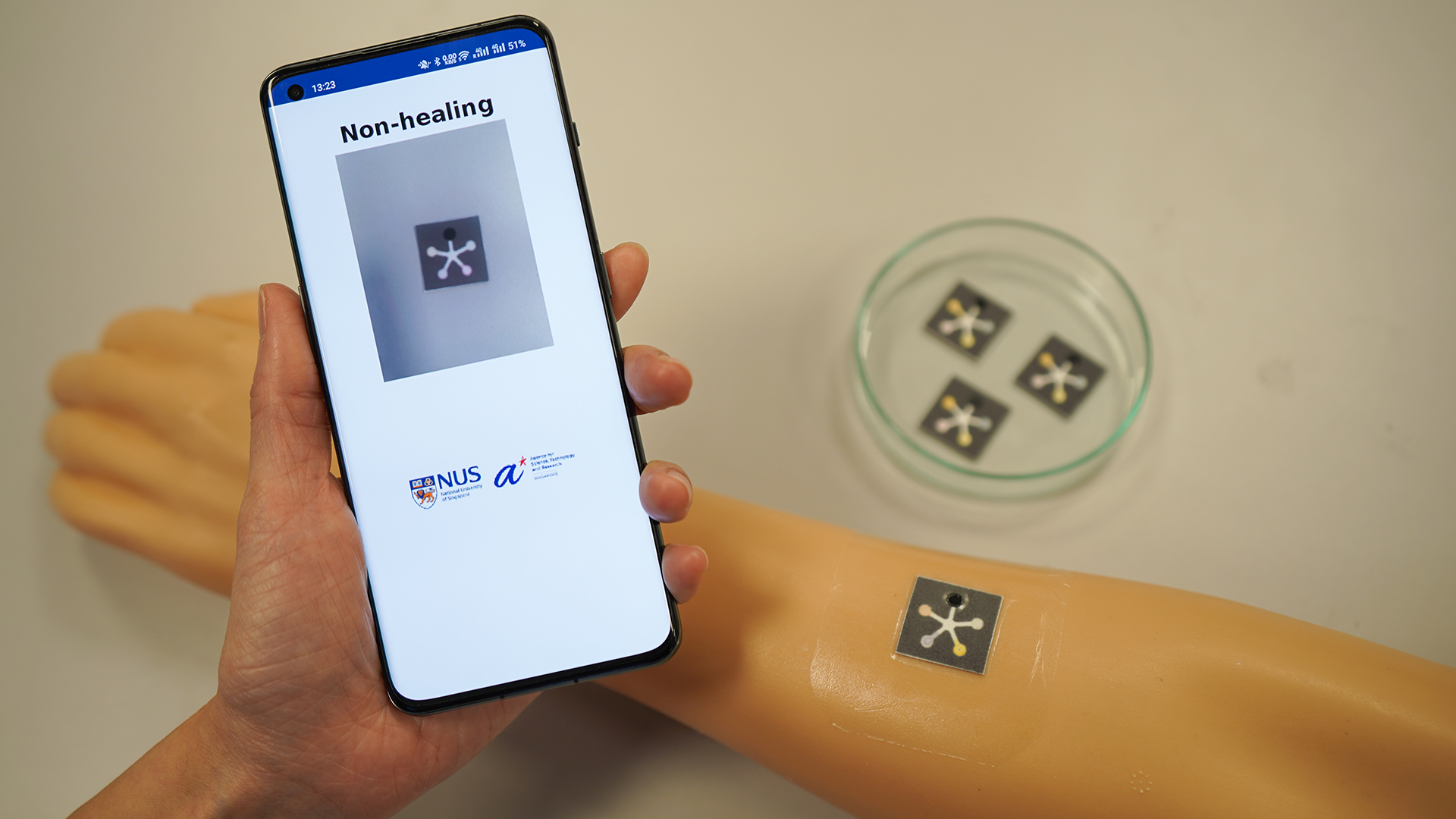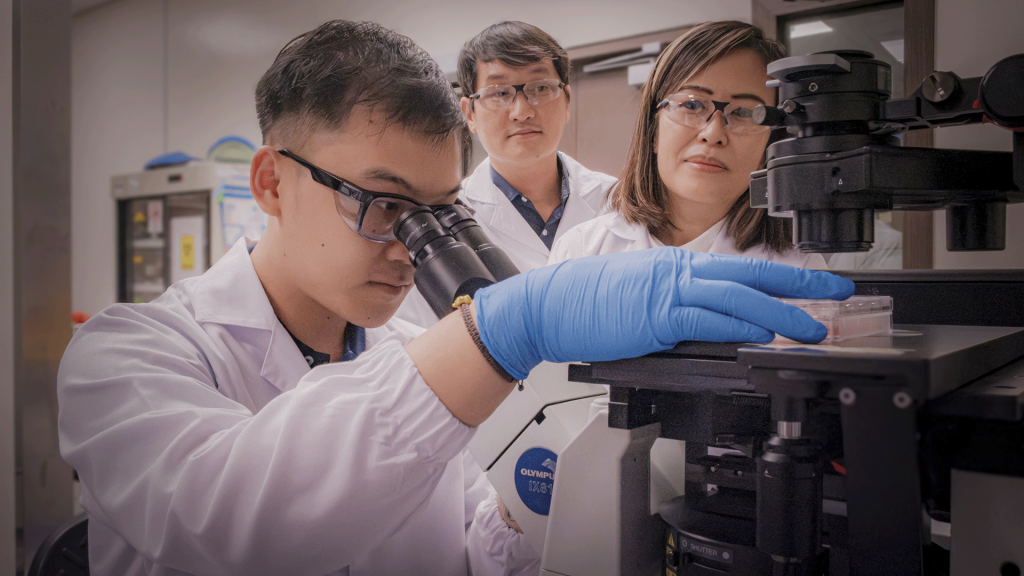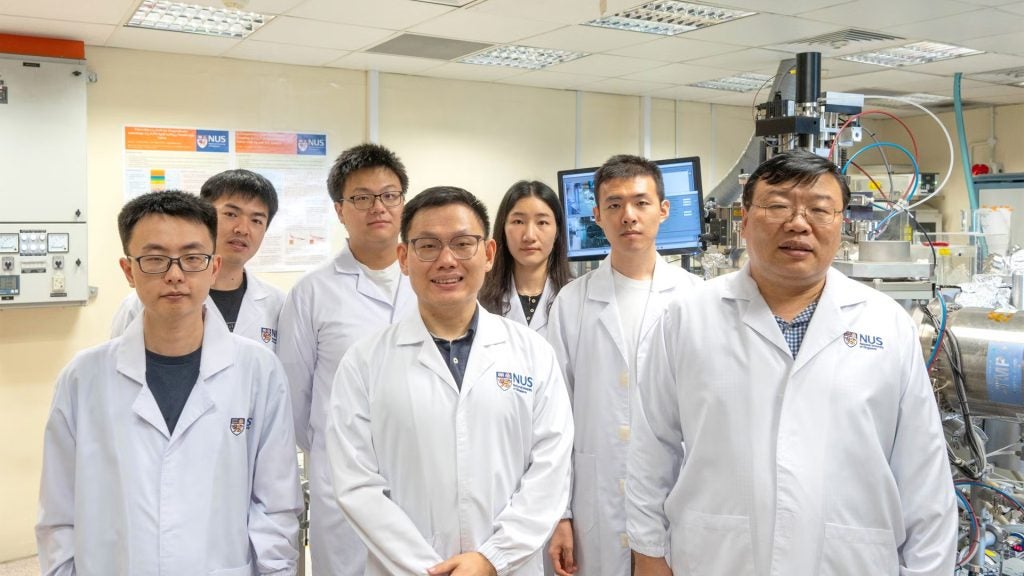
An AI-powered, paper-like sensor patch for monitoring wound recovery has been developed by a team of researchers at CDE.
The CDE team led by Associate Professor Benjamin Tee (Materials Science and Engineering), working with research colleagues at A*STAR’s Institute of Materials Research and Engineering (IMRE), say the innovative device can be easily integrated with wound dressings and provides timely information on the healing process. Early medical intervention can then be administered if needed, helping to minimise adverse complications and scarring.
The flexible, low-cost patch, named PETAL (Paper-like Battery-free In situ AI-enabled Multiplexed), is able to operate without an energy source and comprises five sensors that can determine the patient’s wound healing status within 15 minutes.
This is achieved by using colorimetric sensors, which detect and measure the concentration of a substance by observing changes in colour. PETAL’s sensors measure a combination of biomarkers – temperature, pH, trimethylamine, uric acid and moisture of the wound – providing information on inflammation, infection as well as the condition of the wound environment.
“Timely and effective monitoring of how a wound is healing is critical to wound care and management,” said Assoc Prof Tee, who is also with NUS Institute for Health Innovation & Technology.
“However, current methods of monitoring typically require a visual exam by a doctor, with infections mostly diagnosed via swabbing for a bacterial culture. The long waiting time for results to come back delays diagnosis and can lead to life-threatening medical complications, as well as considerable economic burden to patients and healthcare systems.”
Effective wound management is especially relevant in ageing societies such as Singapore’s, where wounds experienced by elderly patients take longer to heal and are more prone to complications.
Frequent removal of dressings for visual examination also elevates the risks of infection and may cause additional pain and trauma for patients.

PETAL is designed to provide a simple, convenient and effective way of monitoring wounds without removing the dressing so that clinical intervention can be triggered before such complications arise.
“Our research brings together CDE’s expertise in flexible electronics, artificial intelligence (AI) and sensor data processing with nanosensor capabilities of IMRE researchers to develop an innovative solution that could benefit patients with complex wound conditions,” said Assoc Prof Tee.
Sensor images from PETAL are captured by a mobile phone and analysed by AI algorithms to determine the patient’s healing status.
“Our AI algorithm is capable of rapidly processing data from a digital image of the sensor patch for very accurate classification of healing status,” said Assoc Prof Tee. “This can be done without removing PETAL from the wound, allowing doctors and patients to monitor wounds more regularly with little interruption to the wound healing.”
WATCH: Assoc Prof Benjamin Tee interviewed on CNA about development of the PETAL sensor
Dr Su Xiao Di, Principal Scientist, Soft Materials Department, IMRE, said: "We designed the paper-like PETAL sensor patch to be thin, flexible and biocompatible, allowing it to be easily and safely integrated with wound dressing for the detection of biomarkers. We can thus potentially use this convenient sensor patch for prompt, low-cost wound care management in non-specialist healthcare settings such as homes.”
Researchers say there were no apparent signs of adverse reactions observed on the skin surface in contact with the PETAL sensor patch over four days, demonstrating the biocompatibility of the PETAL sensor patch for wound monitoring in patients as they move about.
Additionally, they say the AI-enabled technology can be adapted and customised for other wound types, by incorporating different colorimetric sensors, such as glucose, lactate or Interleukin-6 for diabetic ulcers. The number of detection zones can also be easily reconfigured to detect different biomarkers concurrently, so its application can be broadened for different wound types.
The design and fabrication of the PETAL sensor patch was first reported in the journal Science Advances and the developers have filed an international patent for the device.
| PETAL: How it works
Wearable wound sensors currently available measure only one or a small number of parameters and require bulky printed circuit boards and batteries. The PETAL sensor patch, on the other hand, is flexible, paper-like and does not require any battery to operate. It currently measures five biomarkers, although sensors for more biomarkers can be added if required. Each PETAL sensor patch consists of a fluidic panel patterned in the form of a five-petal pinwheel flower, with each ‘petal’ acting as a sensing region. An opening in the centre of the fluidic panel collects fluid from the wound and distributes the fluid evenly via sampling channels to the sensing regions for analysis. Each sensing region uses a different colour-changing chemical to detect and measure the respective wound indicators. The fluidic panel is sandwiched between two thin films. The top transparent silicone layer allows for normal skin functions of oxygen and moisture exchange. It also enables image display for accurate image capture and analysis. The bottom contact layer gently attaches the sensor patch to the skin and protects the wound bed from direct contact with the sensor panel, to minimise wound tissue disruptions. After sufficient wound fluid is accumulated, the PETAL sensor patch will complete the detection of biomarkers within 15 minutes. Images or a video of the sensor patch can then be recorded on a mobile phone for classification using the proprietary AI algorithm. In lab experiments, the PETAL sensor patch demonstrated a high accuracy of 97 per cent in differentiating healing and non-healing chronic and burn wounds. |





